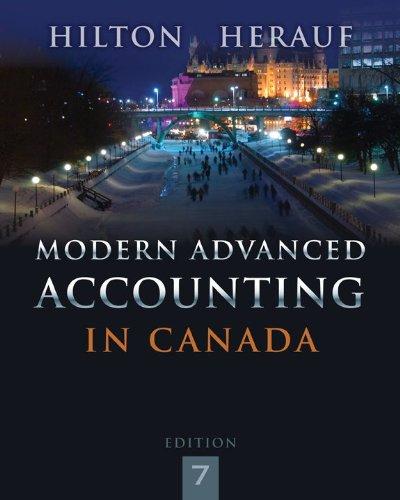Question
1) A firm sold $100,000 worth of goods during 2014. The firm extends warranty coverage on these goods. Historically, warranty costs have averaged 2% of
1) A firm sold $100,000 worth of goods during 2014. The firm extends warranty coverage on these goods. Historically, warranty costs have averaged 2% of total sales. During 2014, the firm incurred $1,000 to service goods sold in 2013 and $200 to service goods sold in 2014. What is warranty expense for 2014?
A) $200 B) $3,200 C) $1,200 D) $2,000
2) Which of the following statements is correct?
A) There is no guidance for self-insurance under IFRS.
B) Contingent assets are only recorded when it is reasonably certain that the benefits relating to the contingent assets will be received.
C) Contingent assets are only recorded when it is virtually certain that the benefits relating to the contingent assets will be received.
D) For companies that are self-insured, a provision must be established for events taking place prior to the reporting period if known.
3) Contingent liabilities will or will not become actual liabilities depending on:
A) The degree of uncertainty
B) The outcome of a future event
C) Whether they are probable and estimable
D) The present condition suggesting a liability
4) Bonds payable (due 5 years from the balance sheet date) should be classified as follows:
A) A contingent liability. B) A current liability.
C) An element of the owners' equity. D) A long-term liability.
5) The rate of interest specified on the face of the debt is called the:
A) Market interest rate. B) Yield interest rate.
C) Effective interest rate. D) Stated interest rate.
6) For bonds payable, the cash interest paid in each interest period is:
A) Not the same amount when the stated and yield interest rates are different.
B) Dependent on the initial amount of accrued interest.
C) Different depending upon the date of sale.
D) The same amount regardless of whether the bond was sold at par, a discount, or a premium.
7) Cash dividends sometimes are declared in one reporting period and are payable in the next reporting period. The dividend should be recorded on the:
A) Record date.
B) Either the declaration, record, or payment date, as preferred by the company.
C) Declaration date.
D) Payment date.
8) CB Corporation issued a 2 for 1 stock split. Which of the following is NOT a true statement concerning the effect of the split?
A) There is a transfer of retained earnings to contributed capital.
B) The number of shares outstanding is increased.
C) A proportionate reduction in the par value per share occurs.
D) There is a continuation of retained earnings with no reduction in its balance.
9) For dividends, the date of record is the date:
A) The dividend is actually paid.
B) The dividend is announced.
C) The market price of the shares drops due to the dividend.
D) On which the list of shareholders is prepared.
10) Ryan Company paid golf dues on behalf of their two top employees. This is an example of a:
A) Reversing difference
B) Temporary difference
C) Permanent difference
D) Fully deductible for income tax purposes
Step by Step Solution
3.33 Rating (153 Votes )
There are 3 Steps involved in it
Step: 1

Get Instant Access to Expert-Tailored Solutions
See step-by-step solutions with expert insights and AI powered tools for academic success
Step: 2

Step: 3

Ace Your Homework with AI
Get the answers you need in no time with our AI-driven, step-by-step assistance
Get Started


